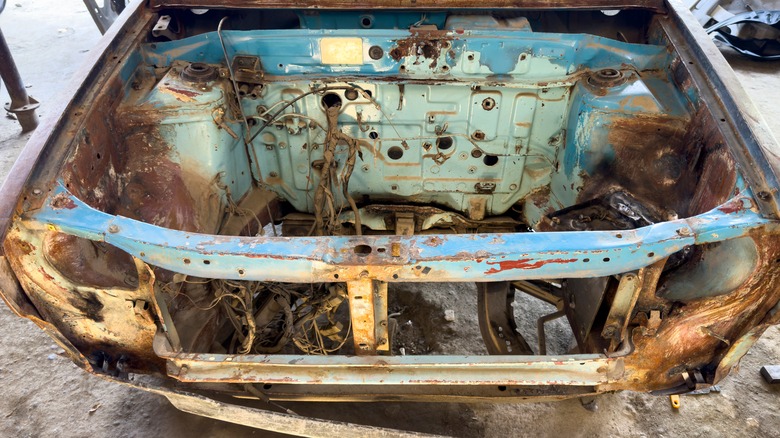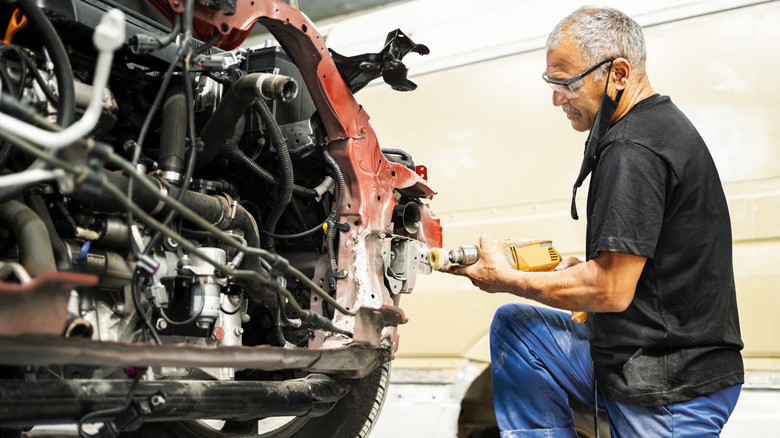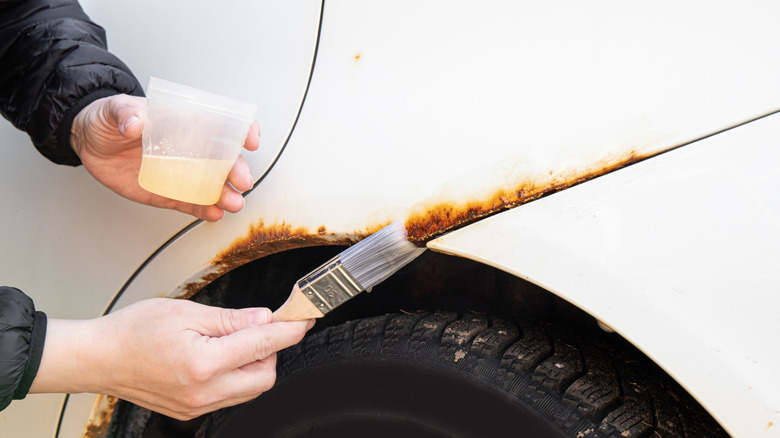Can You Repair Rust On Your Car's Frame? (And Is It Worth The Work?)
The car frame is the main supporting framework to which all other parts of the car are connected. Because a car frame is made of metal, it can rust over time. The good news is that it can be repaired, but whether the repair process is worth it depends on several factors, like cost in time, effort, and money, and even the condition, mileage, and value of the car.
Even with routine cleaning and garage storage, rust can still develop on a vehicle due to several reasons, including moisture, road salt, and water. Rust is created via oxidation, a chemical process that needs an anode, a cathode, and an electrolyte. Electrolytes might be salt or water, and the anode and cathode come from the metal of the car. When all three are present, the metal begins to decompose and form rust.
To treat rust, the first step is to determine the type of rust damage, and from there, use the applicable repair method. Depending on the extent and location of the rust, the repair can be anything from simple and cheap to costly and complicated. For small surface rust, which is a minor type of corrosion, a do-it-yourself enthusiast can do the repair with ease. But for more severe forms, such as penetrating or scale rust, it can require a lot of work and materials, and professional service could be the way to go.
Different levels of corrosion
Because of how iron reacts with oxygen and moisture, rust is almost inevitable on automobiles. The most common type of rust is called surface rust, which is caused when the car's paint or protective layer is damaged, either from bumps or scrapes to the body panels of the car, which exposes the metal beneath. Surface rust appears as a reddish-brown color and is the simplest to repair.
To repair surface rust, start by removing the paint and rust with an abrasive wheel or 50-grit sandpaper until the sheet metal is exposed, and for best results, it is best to sand the surrounding areas as well. Next, use a rust inhibitor or converter to stop the rust from reforming. Apply the rust converter with a brush or sponge and wait 30 minutes for it to dry, then add a second layer and wait another half hour for it to dry. Once the rust converter is dry, the surface can be painted with primer and, afterwards, the paint color and clear coat.
Scale rust develops when metal surfaces corrode for an extended length of time without protection. If left untreated, this rust will likely continue to spread and penetrate far below the surface. To repair scale rust, it is important to remove all the layers of rust using a wire brush, followed by a grinding wheel, and then sandpaper to smooth out the surface. If there are rough spots after removing the rust, body filler should be applied using a metal or plastic spreader, and once dried, sandpaper should be used to smooth it out. As an option, a layer of a rust inhibitor can be applied before painting with the primer, paint, and clear coat.
Repair now, peace of mind later
The worst kind of rust for an automobile is penetrating rust. The vehicle's body, including the components that make up the side panels and undercarriage, now has tears or holes due to rust damage. The car can be beyond repair at this point unless a part can be replaced, or if the worst of the rust is on the bodywork, like panels, the rotted parts can be removed, and metal sheet patches can be used to repair it.
It is important to bear in mind that for penetrating rust, it is not advised to do patchwork repairs to bring the car frame back together. A severely rusted frame can mean a risky vehicle because of the compromised structural integrity. For cars with a lot of penetrating rust, the safest option is to have the car inspected and repaired by a qualified professional or repair facility.
Rust on a car must be repaired as soon as possible to prevent it from spreading and causing more harm. Generally, small rust stains in otherwise safe areas like the doorframe and wheel arch are merely aesthetic damage, but if rust forms and grows in a vital area of a vehicle, it can weaken the car's structure and lessen its capacity to withstand a collision. Additionally, rust on critical components like the drive shafts, brakes, and undercarriage can result in potentially hazardous mechanical failures. Choosing to repair rust on a car's frame either by DIY or through professional shops should be based on the degree of its severity. What's important is that the work is done properly to ensure the best result, prolong the usable life of the car, and provide peace of mind for the owner.


